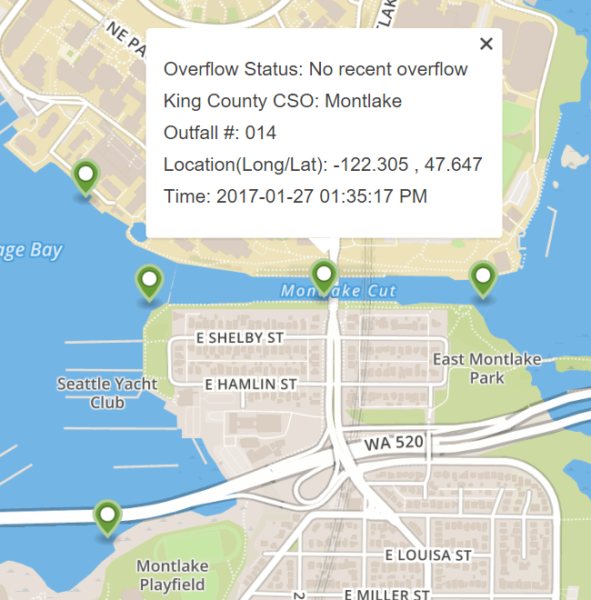 From the late 1800s through the 1940s, engineers designed sewers to carry sewage and stormwater to the nearest body of water. At that time, planners believed that diluted pollution would not harm the water bodies. The system took care of horse manure and garbage on the streets along with human waste. Today, cities in King County build separate pipes; one to carry sewage to a treatment plant and another to carry stormwater to the nearest water body. However, there are still combined sewers in the oldest neighborhoods in Seattle. (source: King County website)
From the late 1800s through the 1940s, engineers designed sewers to carry sewage and stormwater to the nearest body of water. At that time, planners believed that diluted pollution would not harm the water bodies. The system took care of horse manure and garbage on the streets along with human waste. Today, cities in King County build separate pipes; one to carry sewage to a treatment plant and another to carry stormwater to the nearest water body. However, there are still combined sewers in the oldest neighborhoods in Seattle. (source: King County website)
In Montlake, there are four CSO locations that spill combined sewage and stormwater during heavy rains. Here is a link to a map of CSO locations that also shows the current status of each site. This combined sewer overflow status page is provided and maintained by King County.
Typical overflow contents include approximately 10% sewage and 90% stormwater. While discharging untreated sewage into our public waters is certainly gross, the water temperatures are generally too cold for most bacteria in sewage to survive for very long. However, due to health concerns (contact with polluted water can make you sick), King County recommends that people stay out of the water for 48 hours after a combined sewer overflow event.
Susan Ralph says
I wonder about the “no recent overflow” at the S end of the bridge, because last week when I crossed the bridge there was obvious stream of very muddy water entering the cut there.
Tyler Blitz says
The King County status map shows real-time updates. “No recent overflow” means within the last 48-hour period. You also may be interested to know that the site at the southern end of the bridge is the most active in the Montlake area by a considerable margin. It averages 10.8 overflows per year that add up to a total volume of 28.8 MG (million gallons)! The outflow location at the southern end of the bridge is referred to as the King County Montlake Regulator. This information (see Table 3-31) and more is available in the SPU Long Term Control Plan of 2015: http://www.seattle.gov/util/cs/groups/public/@spu/@drainsew/documents/webcontent/01_030101.pdf
Jerry Bosch says
We’ve lived near the Cut for over 20 years and only in the past year or two have we ever smelled the horrible sewage odor Margaret describes in her comment. There must be something different or broken in the system to cause that odor from the street level on Montlake at E. Shelby intersection?!? It’s defintely not been just the last couple of weeks but it seems to be getting stronger…….We’ve seen the large sewer vaccum trucks at the intersection in the past few months and maybe they were trying to address the “problem”. Obviously teh “fix” has not worked…..
Tyler Blitz says
King County suggests that the best thing for any of us to do is to report the odor as soon as possible and provide the location and time it occurred.
In Montlake, we can do this by calling the West Point Treatment Plant at its 24-hour odor control hotline: 206-263-3801.
Here is a link to a King County website with tips for reporting sewer odors:
http://www.kingcounty.gov/depts/dnrp/wtd/response/odor-control.aspx
Here is a link to information about the West Point Treatment Plant:
http://www.kingcounty.gov/depts/dnrp/wtd/system/west.aspx
Margaret A. Cashman says
Well, this certainly explains the strong sewer odor which was present a few weeks ago, for a duration of weeks, when I drove across the Montlake Bridge heading south. It was a heavy odor from near the S end of the bridge to nearly the 520 overpass. Yuk.